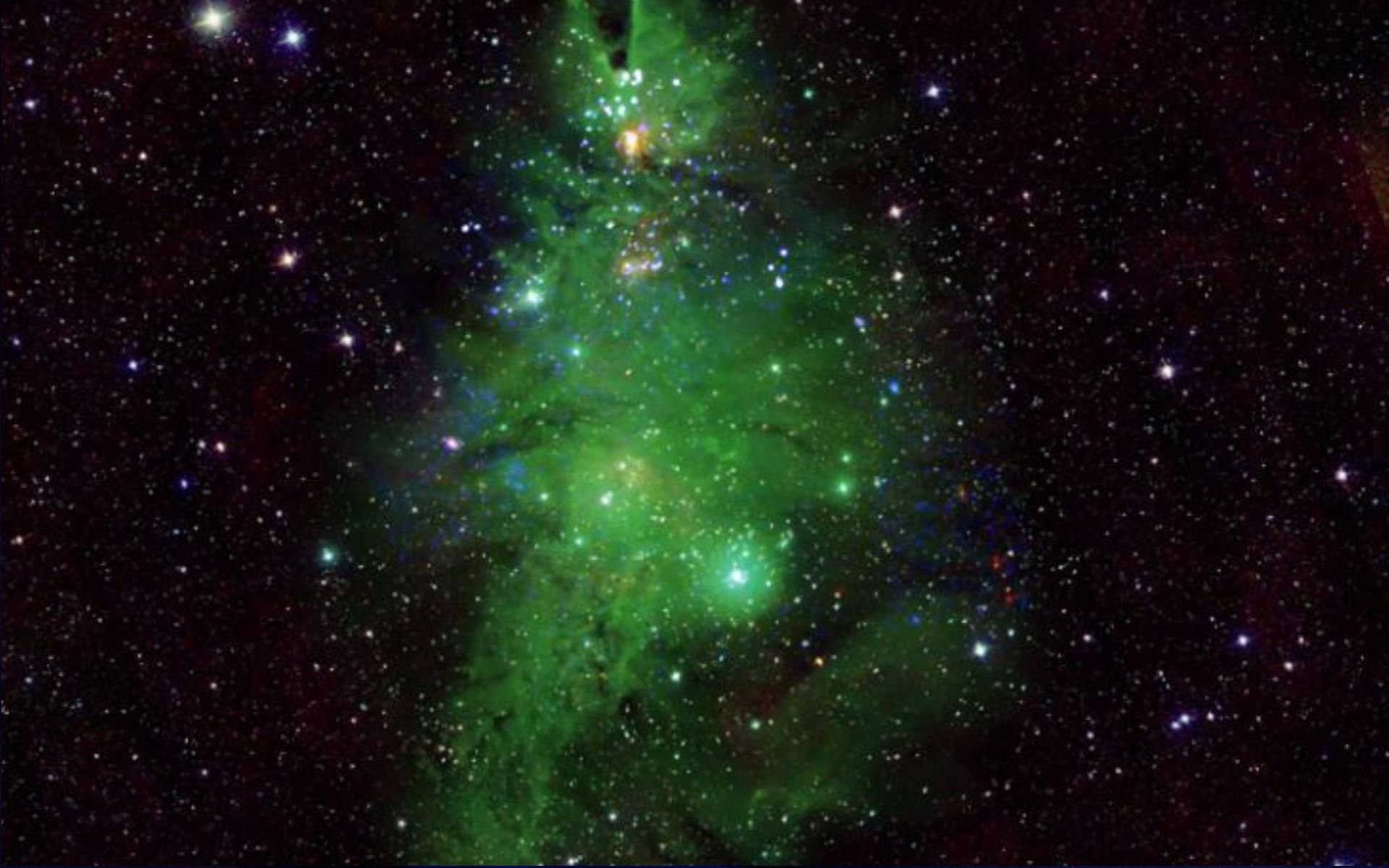In an observation made by the Chandra X-ray Observatory of the United States National Aeronautics and Space Administration (NASA), an image of a cosmic region called the Christmas Tree Cluster (NGC 2264) was captured. The name of the star cluster is not in vain It has a distinctive appearance with green light similar to the shape of a Christmas tree filled with decorations.
It is a cluster of young stars, some smaller than the Sun and others larger, that are between one and five million years old, located about 2,500 light-years from Earth. In a version that revives the image, NASA made some blue and blue. white lights twinkle like a Christmas decoration; This “flashing light” consists of young stars emitting X-rays.
??For more information about the Christmas Tree Cluster, visit us at: https://t.co/c2Y5LiD7yp pic.twitter.com/01v0CHU3oO
—Chandra Observatory (@chandraxray) December 20, 2023
It is important to highlight the astronomers responsible for making the observations. They rotated the image 160 degrees clockwise so that the top of the ‘tree’ appears to be pointing upwards. White stars were captured by the Two Micron All Sky Survey astronomy project and are shown in the foreground and background of the image.
“This release features a composite image of a group of young stars that definitely looks like a cosmic Christmas tree! The cluster known as NGC 2264 is located in our Milky Way galaxy, about 2,500 light-years from Earth. Some of the stars in the cluster are relatively small, while others are relatively large, ranging from one-tenth to seven times the mass of our Sun,” NASA explains in an official release.
Christmas Tree Set
Green nebula consists of cosmic gas, while white lights are emitted via X-rays. In addition, scientists explain that in addition to changes in the thickness of the gas that obscures the stars, there may be other changes related to the cosmic material falling on them from the surrounding gas disks. In young stars, variability in different types of light and strong X-ray bursts are observed, as in the cluster NGC 2264.
Astronomers explain that data changes observed by the Chandra program and other telescopes managed by the Marshall Space Flight Center result from different processes. For example, one of these processes is related to the magnetic fields of the region.
“In this composite image, the cluster’s resemblance to a Christmas tree is emphasized by image rotation and color choices. The optical data is represented by delicate green lines and shapes that form the branches and needles of the tree’s shape. The X-rays detected by Chandra are blue and blue, resembling bright points of light on the tree.” displayed as white lights,” adds NASA.
Did you like the content? So stay updated with more astronomy curiosities at TecMundo. If you wish, take the opportunity to learn how NASA’s budget is created and how much the Space Agency plans to spend in 2024.
Source: Tec Mundo
I’m Blaine Morgan, an experienced journalist and writer with over 8 years of experience in the tech industry. My expertise lies in writing about technology news and trends, covering everything from cutting-edge gadgets to emerging software developments. I’ve written for several leading publications including Gadget Onus where I am an author.













